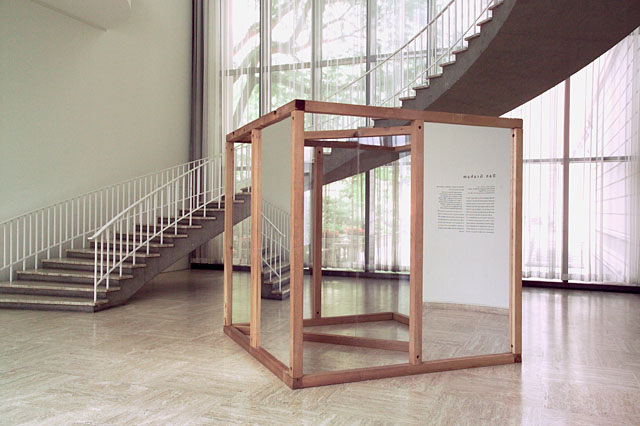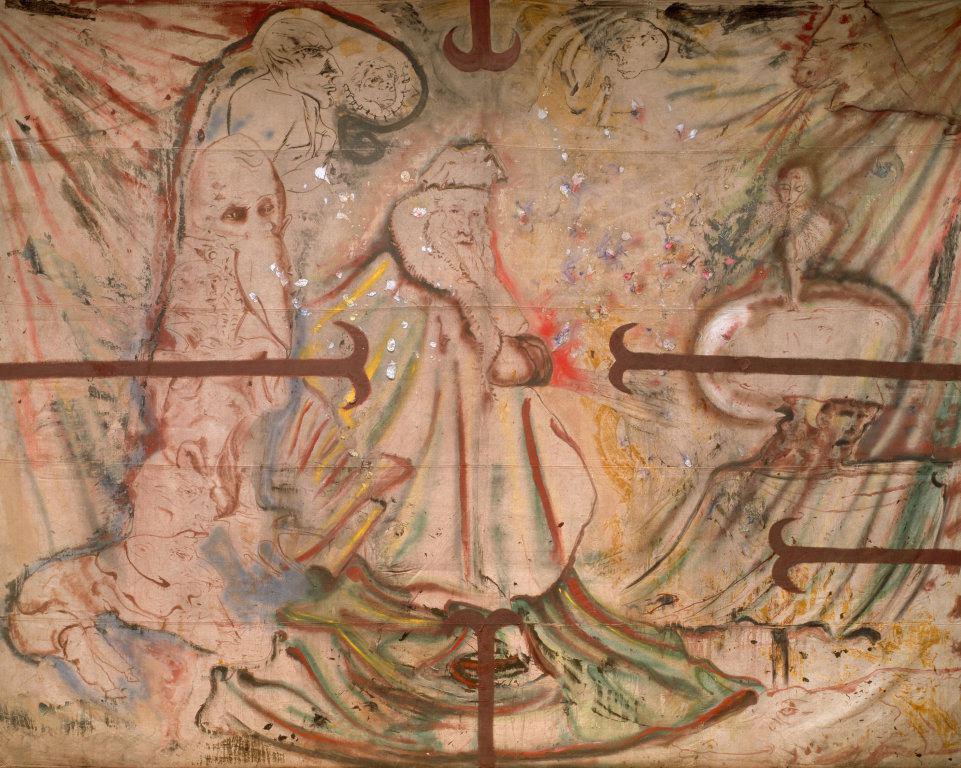This is the maquette for a large sculpture built in 1982 on the grounds of Argonne National Laboratory in Argonne, Illinois, the first of Dan Graham’s outdoor pavilions. Graham divided the square base of the work diagonally with a transparent pane, creating two equal triangular spaces that are visually continuous but physically separate.
Viewers activate the work upon entering it, and become part of the piece by observing themselves and others in relation to its varying mirrored, transparent, or opaque surfaces. By complicating the perception of space, the sculpture draws attention to the separations among viewer, artwork, and environment. Installing the pavilion outdoors adds to its complexity through its continual reflection of variations in atmospheric conditions and light. First exhibited at the Renaissance Society at the University of Chicago in 1981, the pavilion has not been on view at the Art Institute since it was acquired in 1982. In 2002 the Art Institute began an extensive restoration of this important work. Conservators have returned the sculpture to its nearly original condition, preserving the somewhat unfinished quality Graham intended for the model.


